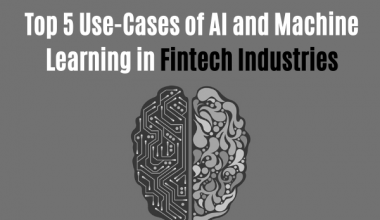
What if you were given to a robot for diagnosis and surgery? How about the robot drawing your blood, stitching your cut, or operating on you by itself?
Well, the idea of robots in healthcare improvement is not new since 1985 when industrial robots have been planned to become precision machines in surgery and beyond.
Therefore, the arrival of AI-based Healthcare App Development Companies and industries has brought so much change that what once used to spend large dollars and wait in long queues is now being limited to mobile devices.
The advancement of technology such as artificial intelligence (AI) and robotics has already started to shape the future of healthcare delivery and will have a significant effect on patient experience over the next 20 years.
It could be impressive, but robots cannot control the healthcare sector completely so the control of humans over AI will remain the same. The real magic of the robo-doctor from the 21st century will be artificial intelligence systems where it learns and outperform the current doctors incorporating all the knowledge available in every medical repository.
AI becomes more and more advanced in doing what people do but faster and cheaper in production. Both AI and robotics have a huge potential for healthcare. Like in everyday life, AI and robotics are increasingly involved in our health care ecosystem. Nevertheless, most experts agree that AI will not replace trained medical staff in several fields, only make them more effective.
We have highlighted major key factors on how both Robotics and Artificial Intelligence Technology in Healthcare going to transform the healthcare sector completely.
- Keeping Well
The motto of AI and Robotic based healthcare solutions is that people should keep themselves healthy. People are already beginning to use AI and the Internet of Medical Things (IoMT) in consumer health applications.
Technology applications such as AI and IoT-based wearable gadgets encourage healthier behavior moreover; help people to manage a healthy lifestyle proactively. This regulates the health and well-being of customers.
In addition, AI strengthens the ability of health professionals to better understand the everyday behaviors and needs of the people they care for and to offer better input, guidance, and support for a healthy environment.
- Improving Accuracy & Reducing Error Rates
Robotic systems do not have feelings, they cannot get tired, and they never get any attention. It’s also the logic behind numerous robots that are already used in leading hospitals around the world when it sounds like a dream operator.
There is something called Waldo surgeons, they are able to bridge the gap between humans and machines and carry out tasks with exceptional accuracy, and increased strength. The human surgeon will have a secondary supervisory role as long as the program is properly set for the operation.
Excellent precision is also offered in the form of guided micro-robots, which go precisely where they are required and deploy drugs locally or even perform microsurgery, such as unclogging blood vessels.
In turn, AI will help physicians follow a more all-inclusive approach to disease management and organize their care plans more effectively. It also helps people handle their long-term treatment programs effectively and complete them.
Also Read:
Blockchain stands tall as this technology has made a high impact and forever changed our environment and lifestyle through its Blockchain Healthcare App Development solutions.
- Precise Diagnosis
IBM’s Watson for Health assists health organizations in using cognitive technology in order to access huge quantities of health data and power diagnosis.
The real strength of AI is the identification of trends that reflect various conditions, according to experts from InData Labs, by analyzing health records and other data. Thousands of cases can be analyzed and associations between hundreds of variables are found, some of which are not even reported in the current medical research.
Tests to date have shown that robotic systems in some fields can compete with the best doctors or even defeat them. For example, the endoscopic device in Japan is 86% accurate and detects colon cancer in real time.
This is not as impressive as IBM Watson, which in cancer diagnosis has already reached the 99% mark. Watson can analyze much more medical information and store it exponentially faster than any person stores–every medical paper, symptom, and case study in diagnosis and response all over the world.
In collaboration with clinicians, researchers and patients, Google’s DeepMind Health works to solve real-time health problems. This technology integrates the neuroscience of machine learning and systems to create powerful, universal learning algorithms that mimic human intelligence in a neural network.
Know More: How Wearable Healthcare Devices Deliver the Next Level Benefits
- Decision Making
Better care needs to be aligned with appropriate, timely decisions with big health facts, and clinical decision-making and actions can be supported in predictive analytics as well as administrative tasks.
One context in which AI is beginning to take root in health care is using pattern recognition to recognize patients at risk of developing a disease–or to see it worsen because of lifestyle, environmental, genomic or other factors.
- Remote Treatment
DARPA first thought of using a robot remotely for medical purposes in the 1990’s, but communication networks could not support soldiers on the battlefield. Today’s 4 G and future 5 G requirements have made this a past issue.
DARPA continues to fund these efforts, but robotic surgeons still appear to require hygienic assistants and other tasks, which make matters more complicated and not economically viable.
One way to support surgeons is to create a customized, real-time surgical overlay and view blood vessels and other sensitive areas together with other AR capabilities. The information library will suggest different techniques based on the best practice if a robotic arm is used.
Another type of remote medical robot is a simple bot pill, which is far more convenient than previous options for endoscopy. The magic pill sends images of your intestines as they move through them, so you automatically remove them.
- Augmenting Human Abilities
In addition to medical personnel, certain medical robots help patients. Exoskeleton robots as an example can help the paralyzed patients move and be self-sufficient.
A smart prosthesis is another use of technology. These bionic limbs have the ability to cover them with bionic skin and link them to the muscles of the person. They are sometimes more reactive and accurate than their own body parts.
- Research
It is a long and costly journey from research laboratory to patient. It takes an average of 12 years to move a medicine from study to the patient, according to the California Biomedical Research Association.
Only five out of five thousand preclinical research drugs are ever approved for human use and only one out of the five is ever accepted. Moreover, the development of a new medicine from the research lab to the patient will cost a company an average of US$ 358 million.
One of the new uses for AI for healthcare is Drug Testing and Discovery. Through steering AI to improve the process of drug discovery and re-use, it is possible to reduce both the time for the launch of new medications and their costs significantly.
- Supporting Mental Health And Daily Tasks
Service robots can perform human tasks such as making patients sick or elderly feel less lonely. Talking robots and fellows that help these patients remain positive and remind them to take their medications and to carry out simple routine checks such as temperature, blood pressure and sugar levels.
They are almost like staff assistants and even feature integrated capacity for personality and feeling analysis, which is particularly useful for depressed patients.
- Auxiliary Robots
A hospital has a lot of work and it can’t just be used by doctors. Nurses and hospital staff will benefit from robots like the Moxi robot by Diligent Robotics. The robotic system ensures taking care of restocking, the delivery of products and the cleaning of those nurses to allow to spend more time with their patients and provide a human touch.
The UV Light disinfectant robot is another excellent auxiliary robot, which enters the hospital and does not leave until it is germ-free.
- Training
AI lets those who are involved in training to perform naturalistic simulations in a manner that cannot be carried out by computer-driven algorithms.
Natural speech and the capacity of an AI program to draw on a wide range of data scenarios automatically mean that a person response to questions, decisions or advice of his or her trainee.
The training program will benefit from the trainee’s previous responses that allow them to constantly change the challenges to suit their learning needs.
In addition, preparation can be carried out wherever possible; after a difficult case in a clinic or while traveling, fast catch-up sessions can be accomplished through the power of AI on the smartphone embedded.
Conclusion
Are you ready to take part in this revolutionary future? If you are looking to start with a healthcare solution, then contact Fusion Informatics, we are a one of the most known Top Healthcare App Development Company in Bangalore, India, San Francisco, and Dubai.
We have been working closely to build the highest quality medical and healthcare solution with different healthcare businesses, medical professionals and hospitals, which allowed our clients to achieve maximum return on investment.






